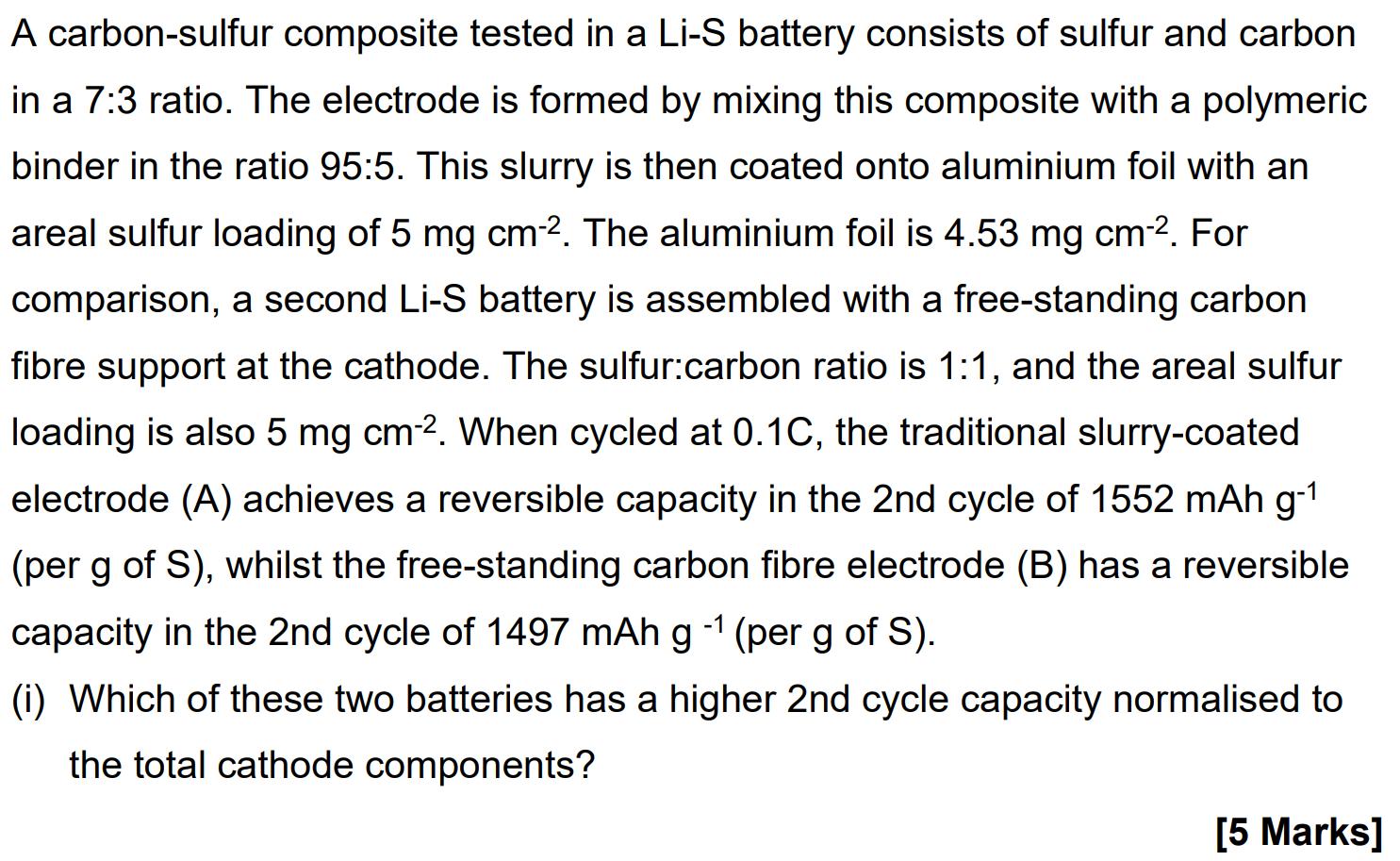Answered step by step
Verified Expert Solution
Question
1 Approved Answer
A carbon-sulfur composite tested in a Li-S battery consists of sulfur and carbon in a 7:3 ratio. The electrode is formed by mixing this

A carbon-sulfur composite tested in a Li-S battery consists of sulfur and carbon in a 7:3 ratio. The electrode is formed by mixing this composite with a polymeric binder in the ratio 95:5. This slurry is then coated onto aluminium foil with an areal sulfur loading of 5 mg cm-2. The aluminium foil is 4.53 mg cm. For comparison, a second Li-S battery is assembled with a free-standing carbon fibre support at the cathode. The sulfur:carbon ratio is 1:1, and the areal sulfur loading is also 5 mg cm. When cycled at 0.1C, the traditional slurry-coated electrode (A) achieves a reversible capacity in the 2nd cycle of 1552 mAh g-1 (per g of S), whilst the free-standing carbon fibre electrode (B) has a reversible capacity in the 2nd cycle of 1497 mAh g -1 (per g of S). (i) Which of these two batteries has a higher 2nd cycle capacity normalised to the total cathode components? [5 Marks]
Step by Step Solution
There are 3 Steps involved in it
Step: 1
To find out which battery has a higher second cycle capacity normalized to the total cathode components we first need to determine the weight of each component in the electrode for both batteries Lets ...
Get Instant Access to Expert-Tailored Solutions
See step-by-step solutions with expert insights and AI powered tools for academic success
Step: 2

Step: 3

Ace Your Homework with AI
Get the answers you need in no time with our AI-driven, step-by-step assistance
Get Started


